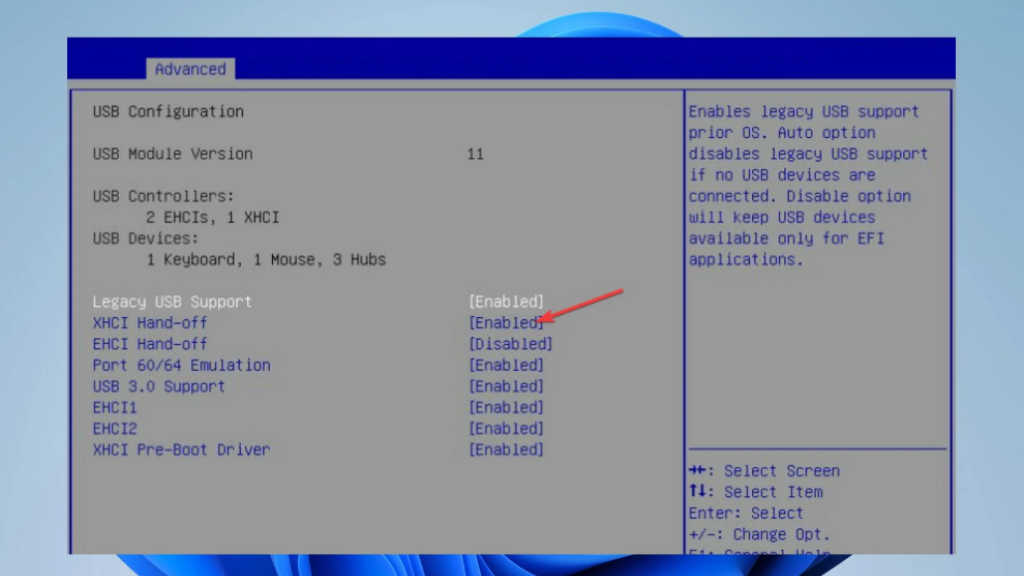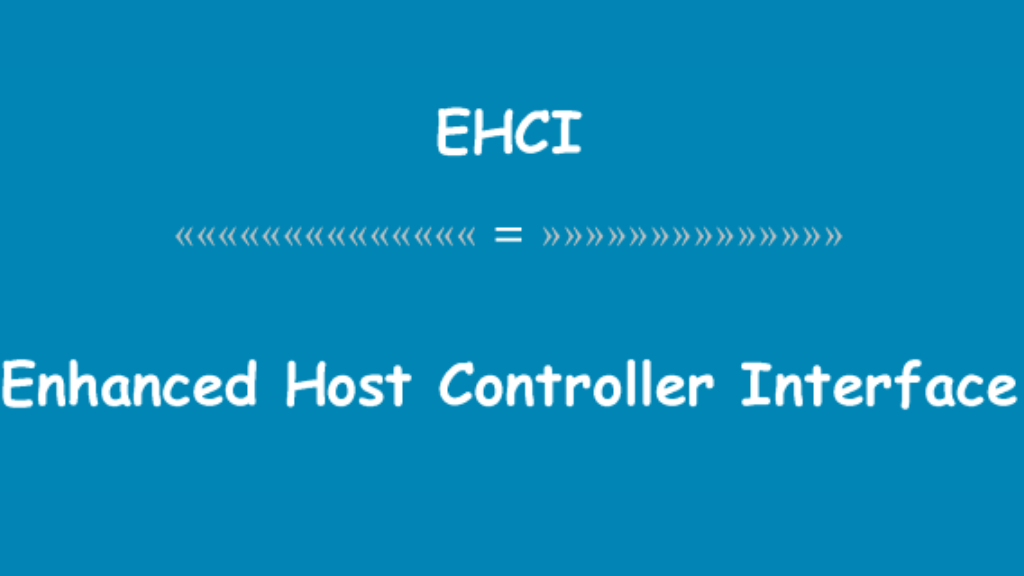
There is a feature that is already activated when you set up your computer in the most recent version of Windows. However, you might need to activate this feature on your own if you are using an older version of Windows, such as Windows 7 or 8. It is known as “XHCI Hand-Off” and can be found in the BIOS settings of your computer. This article will make sense of everything about XHCI Hand-Off, what it does, and whether it’s smart to actuate it on your PC.
What is XHCI Hand-Off Feature?
The onboard USB 3.0 port functions like a 2.0 port until the OS USB 3.0 driver is installed. The BIOS is “clever” enough to prevent the USB 3.0 port from working as USB 2.0 before the OS USB 3.0 driver loads if you restart the OS. Consequently, Smart Auto is quicker than Auto on the second boot, but Enabled is quicker after you are aware that the OS has the USB 3.0 driver loaded since it prevents switching.
Making the onboard USB 3.0 port act like a 2.0 port is mostly used for OS installation or to support OSs that don’t have a built-in USB 3.0 driver so that a USB keyboard or other USB devices may be put into the USB port. 3.0 ports with the motherboard’s USB 3.0 driver before the OS is loaded.
What is EHCI

It is an upgraded host controller interface standard. It describes the register level interface of a USB 2.0 host controller. The hardware/software interface between system software and host controller hardware is described by the EHCI specification and is largely utilized in the creation of hardware EHCI and XHCI, two host controller interfaces, which are interchangeable. The former was constructed utilizing the current USB3.0 standard and is also USB2.0 compliant, whilst the latter was made for the USB2.0 interface. Simply put, XHCI is an improved version of EHCI.
Due to the absence of an XHCI driver, the USB mouse and keyboard will not work with the win7 system when it is installed on the motherboard from the 100 series, but they will work with the native win8 and win10 systems thanks to the integrated XHCI driver. EHCI and XHCI, two host controller interfaces, are interchangeable. The former was constructed utilizing the current USB3.0 standard and is also USB2.0 compliant, whilst the latter was made for the USB2.0 interface. Simply put, XHCI is an improved version of EHCI.
Before learning about EHCI, you need first to get familiar with HCI (host controller interface). HCI, or host controller interface, enables register-level communication between a host controller (such as a Southbridge or motherboard) and peripheral devices (such as USB, FireWire, and Bluetooth).
When the peripherals are attached to the PC, the system initially initializes, and HCI starts reading and writing threads to establish the connection with the peripherals. The peripheral will then be reset by HCI, and communication with it will start after reading the cache size. With EHCI, HCI has improved (extended host controller interface).
Briefly stated, the USB 2.0 interface is another name for the EHCI interface. If your computer is USB 2.0 compatible, you can connect the USB devices you use to it.
Deference between EHCI and XHCI
The extensible host controller interface (XHCI), a USB host controller, was created by Intel. The XHCI master control USB protocol, which is primarily targeted at USB 3.0 but also compatible with USB 2.0 devices, is the one utilized by Intel Xinyi 100 series CPUs.
In a nutshell, the most modern host controller interface from Intel is called XHCI. On motherboards from the 100 series, which correspond to Intel’s sixth-generation Skylake CPU, it is frequently observed. It is backward compatible with USB 2.0 and supports USB 3.0.
EHCI and XHCI, two host controller interfaces, are interchangeable. The former was constructed utilizing the current USB3.0 standard and is also USB2.0 compliant, whilst the latter was made for the USB2.0 interface. Simply put, XHCI is an improved version of EHCI.
Should You Enable XHCI Hand-Off Feature On Your PC?
This feature known as “XHCI Hand-Off” is already set up for you, so you don’t have to worry about turning it on if you have the most recent version of Windows. However, if you’re using an older version of Windows, such as 7, 8, or Vista, you might have to do it yourself in the BIOS settings of your computer.
Presently, regardless of whether you ought to turn it on relies upon what you believe that your PC should do. Enabling this feature is a good idea if you want to use USB 3.0, a faster connection type. Be that as it may, in the event that you favor utilizing USB 2.0 for reasons unknown, perhaps in light of the fact that it’s quicker for specific things, then, at that point, you can leave this component switched off. What works best for you and your computer requirements is everything.
Should I Enable XHCI Hand-Off In BIOS?
Empower XHCI Hand-Off in Profiles if you have any desire to utilize USB 3.0 for quicker information move. You can disable it if you prefer USB 2.0 or do not require the additional speed. It relies upon your particular requirements and the gadgets you intend to associate with your PC.
Does Windows 10 Have XHCI Hand-Off?
No, Windows 10 does not have a built-in XHCI Hand-Off feature. XHCI Hand-Off is typically a BIOS or UEFI setting that controls how USB ports are managed, and it’s not a part of the Windows operating system itself. You would need to access your computer’s BIOS or UEFI settings to configure XHCI Hand-Off.
What Does XHCI Hand-Off Do?
XHCI Hand-Off is a BIOS or UEFI setting that affects how USB ports are managed. When it’s enabled, the operating system, like Windows, takes control of USB devices, which is necessary for USB 3.0 functionality. If it’s disabled, the BIOS or UEFI retains control, and this might be preferred if you need compatibility with older USB 2.0 devices.
Related Articles:
How to Resolve Access denied for user root localhost
How to Fix IMS Registration Not Registered: Your Comprehensive Guide.
How to Clean Up Windows Installer Folder for Improved Performance.
